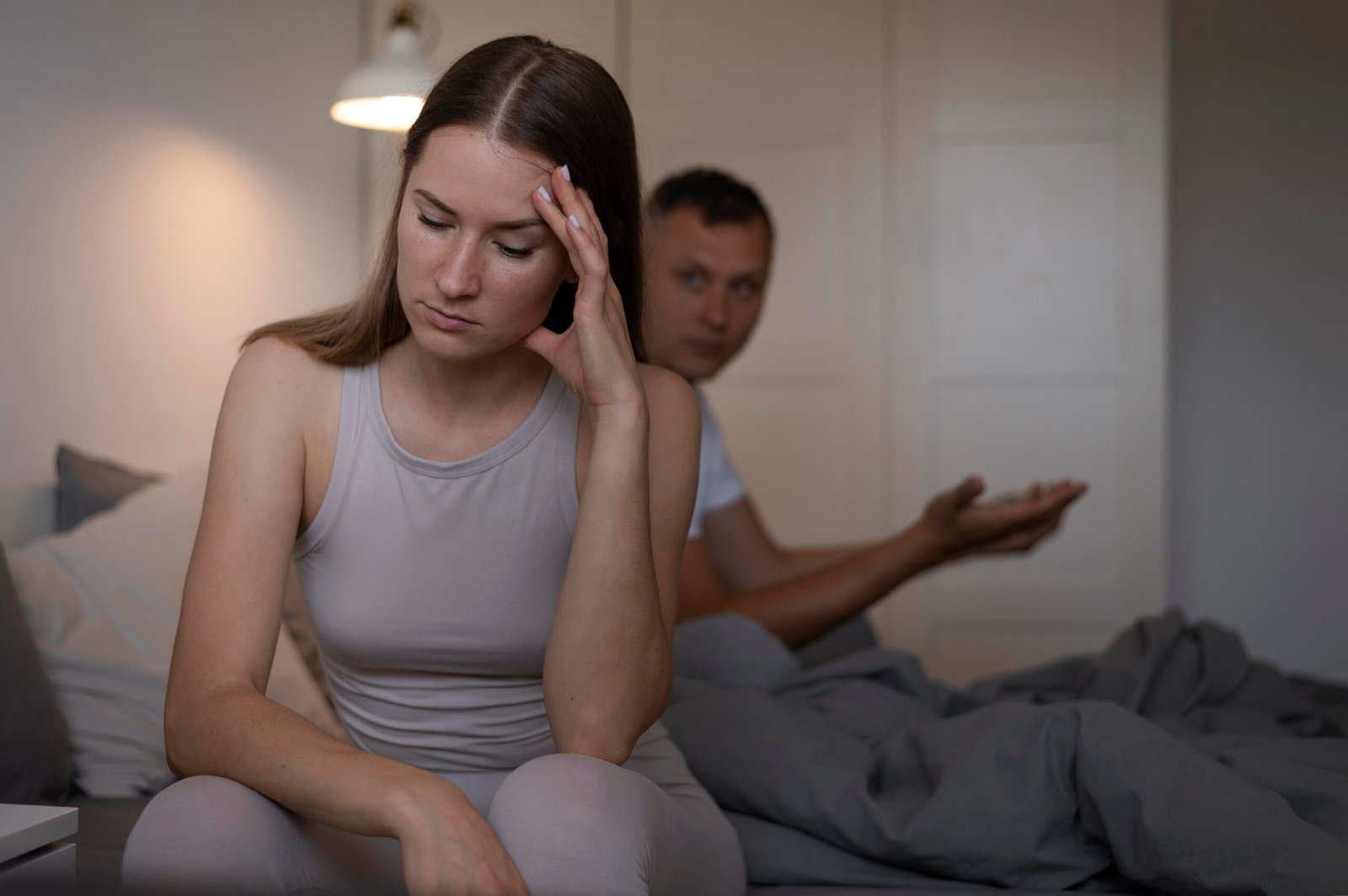Topic : Understanding Loss of Libido: A Gynaecologist’s Perspective: Dr Subhi Singh (Non- Judgmental Gynecologist)

As a Gynaecologist, I’ve had the privilege of walking alongside countless women, each with their unique stories and challenges. One issue that often surfaces in our conversations is the complicated, that often goes unspoken in public but is frequently on people’s minds.
Yes, I’m talking about “Loss of libido”. It’s a common concern for both men and women, whether they are aging or even at a younger age.
Sexual drives and pleasure is an important and undeniable truth of life and hence, loss of libido should not be taken lightly and confused with just fluctuations in sexual desires because it actually refers to a persistent or recurrent lack of interest in sexual activity. It is different from occasional fluctuations in sexual desire, which are normal and often influenced by life circumstances. When a low sex drive interferes with a woman’s quality of life or relationships, it demands attention.
It is believed that experiencing sexual desire is completely natural, and it’s normal for that desire to diminish over time as we age. However, many people are unaware that a reduction in libido can occur for various reasons beyond just aging. Often, individuals accept this decline as an inevitable part of getting older, or they may worry that if it happens at a younger age, it indicates an irreversible problem. The truth is that loss of libido is often treatable, and it’s important for people to understand the underlying causes.
As a gynecologist, I often encounter patients dealing with changes in libido, and I want to shed light on some common factors that can influence sexual desire.
Here are most Common Causes of Loss of Libido-
Loss of libido is a multifactorial issue, often rooted in a combination of physical, hormonal, psychological, and relational factors:
1. Hormonal Changes: For many women, menopause is a significant transition. The decline in estrogen levels can lead to symptoms such as vaginal dryness and discomfort during intercourse, which understandably reduces sexual desire. It’s important to discuss these changes openly, as there are effective treatments available to alleviate discomfort.
2. Pregnancy and Postpartum: Pregnancy brings profound hormonal fluctuations, and many women find that their libido is affected both during pregnancy and in the postpartum period. Fatigue, physical changes, and the demands of new motherhood can all play a role in decreasing sexual desire. Counseling and support can help navigate these changes.
3. Polycystic Ovary Syndrome (PCOS): Hormonal imbalances related to PCOS can also reduce sexual desire. If you’re experiencing symptoms such as irregular periods, unwanted hair growth, or weight gain, it’s essential to discuss how these factors may be affecting your libido.
4. Chronic Illnesses: Conditions such as diabetes, hypertension, and thyroid disorders can significantly impact sexual desire. These chronic illnesses often come with their own set of challenges that can affect overall well-being and intimacy. Managing these conditions with your healthcare provider is crucial.
5. Medications: Various medications, including certain antidepressants, hormonal contraceptives, and antihypertensives, can lower libido. If you notice a change in your sexual desire after starting a new medication, it’s important to discuss this with me or your primary care provider.
6. Stress and Anxiety: High levels of stress and anxiety are common culprits that can suppress your sexual desire. It’s important to consider your mental health as a significant factor in your sexual well-being. Stress management strategies can make a big difference.
7. Depression: Depression can result in a profound loss of interest in pleasurable activities, including sex. Acknowledging this symptom is critical, and seeking appropriate treatment can help restore both emotional and physical intimacy.
8. Body Image Issues: How you perceive your body can greatly affect your sexual confidence and desire. Negative self-image can diminish your interest in intimacy. Open conversations about body positivity and self-acceptance can be beneficial.
9. Relationship Dynamics: Emotional intimacy is a vital component of sexual desire. If you’re facing unresolved conflicts or dissatisfaction in your relationship, these issues can lead to a decreased interest in sex. Consider discussing relationship dynamics with a qualified therapist or counselor.
Physical examination and diagnosis:
As a non-judgmental gynaecologist, I always try to establish a secure environment where women can express their emotions without worrying about criticism. Listening to them and acknowledging their experiences is just as important as diagnosing or prescribing.
1. As a next step to find any underlying causes, I take a complete history of symptoms after creating a comfortable setting. This involves asking about libido fluctuations and symptom onset, relationship dynamics, and pertinent lifestyle factors like stress levels, exercise routines, and sleep patterns.
2. The next step is a physical examination to look for indications of vaginal dryness or atrophy, hormone imbalance, and possible underlying medical conditions. Additionally, blood tests may be prescribed to evaluate thyroid function, hormone levels, and other potential contributing factors.
I often encourage my patients to view libido not as a fixed state but as a dynamic aspect of their lives that can change due to various influences. Education plays a crucial role here—I provide information about the physiological and emotional aspects of libido to empower women to understand what they’re experiencing.
Although Depending on the outcomes, each person receives a customised course of treatment that may involve:
• Hormonal therapy: giving menopausal women vaginal rings or oestrogen lotions.
• testosterone treatment with careful observation in certain situations.
• Lifestyle Changes: Consistent exercise to improve mood and vitality.
• methods for reducing stress, such as yoga and meditation.
• Cognitive-behavioral therapy (CBT) is used in counselling and therapy to treat anxiety and stress.
• Couples therapy is used to address relationship issues.
• Drugs: Writing prescriptions for the right drugs in accordance with particular requirements.
In the end, my experience working as a gynaecologist has strengthened my conviction that comprehensive treatment is crucial. Together, we can traverse these difficulties by treating the full person—mind, body, and spirit—which promotes better sexual health as well as a stronger sense of self and connection with their partners.




